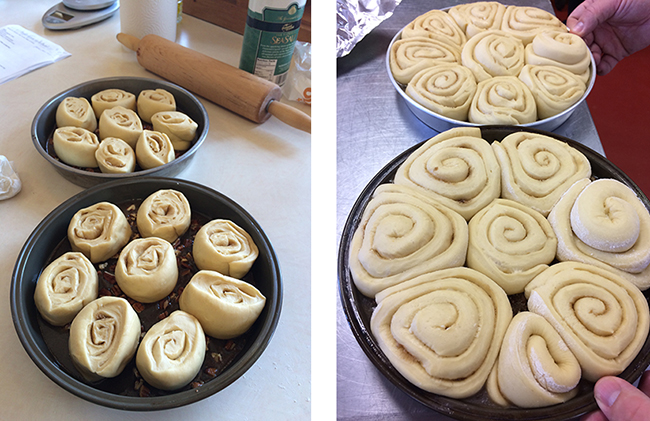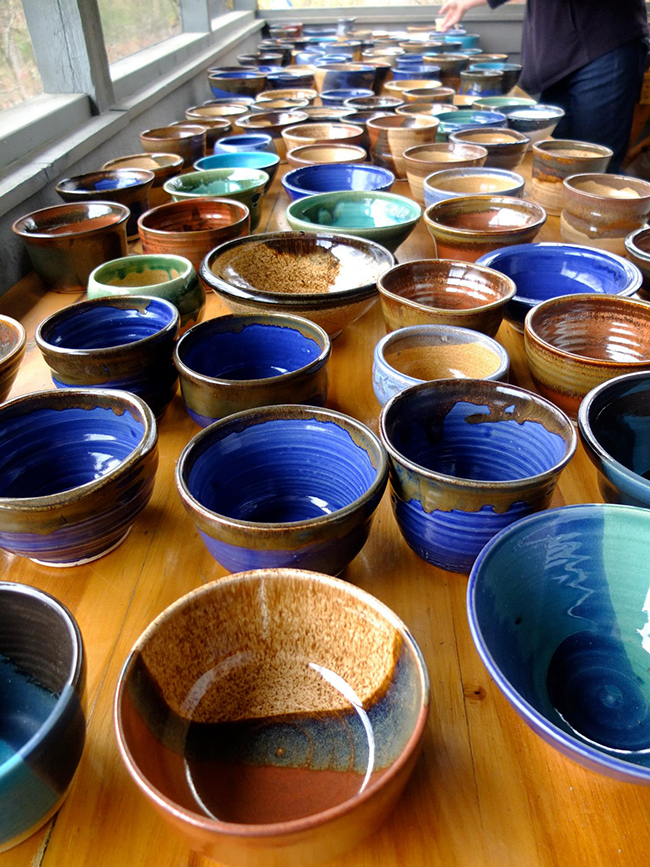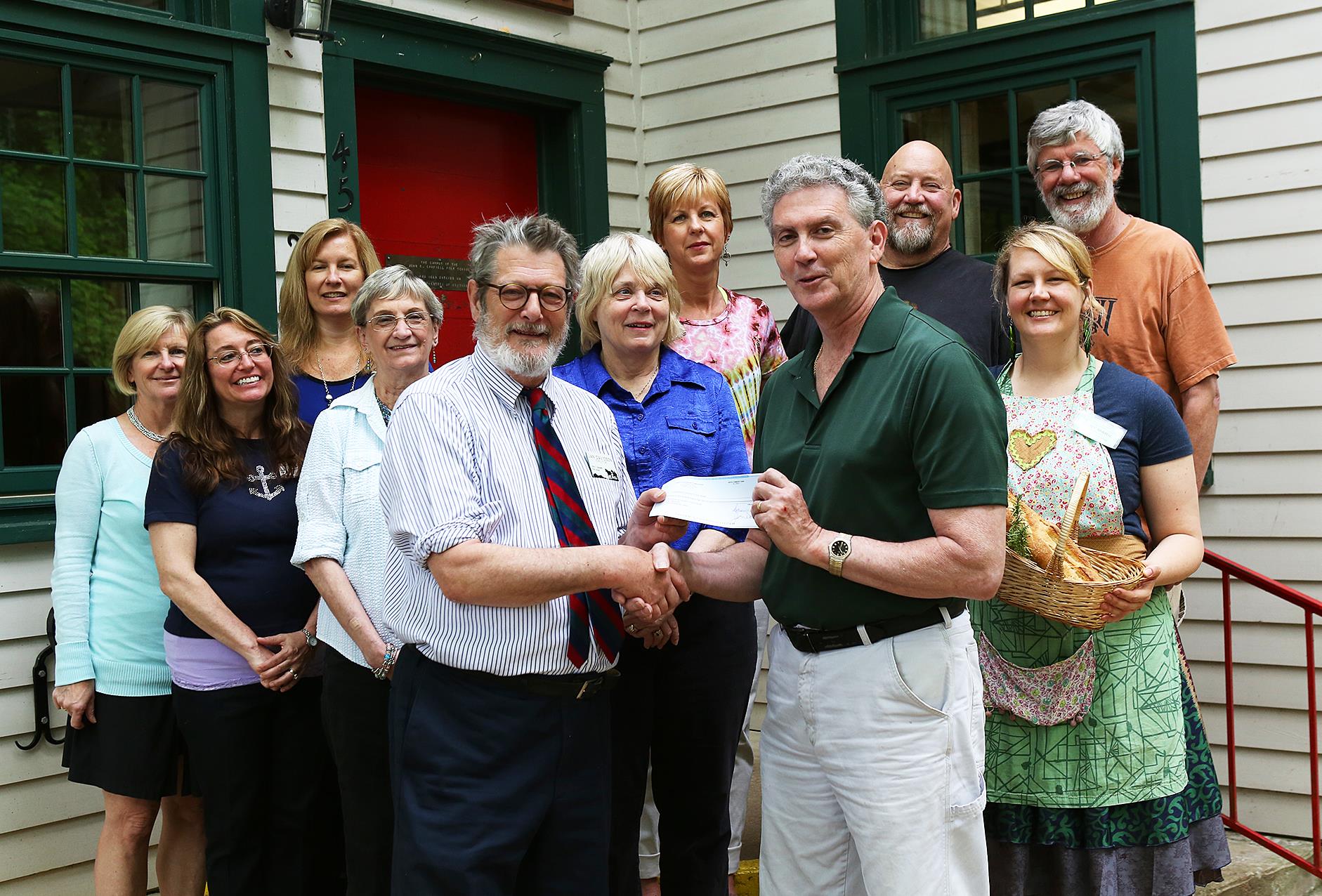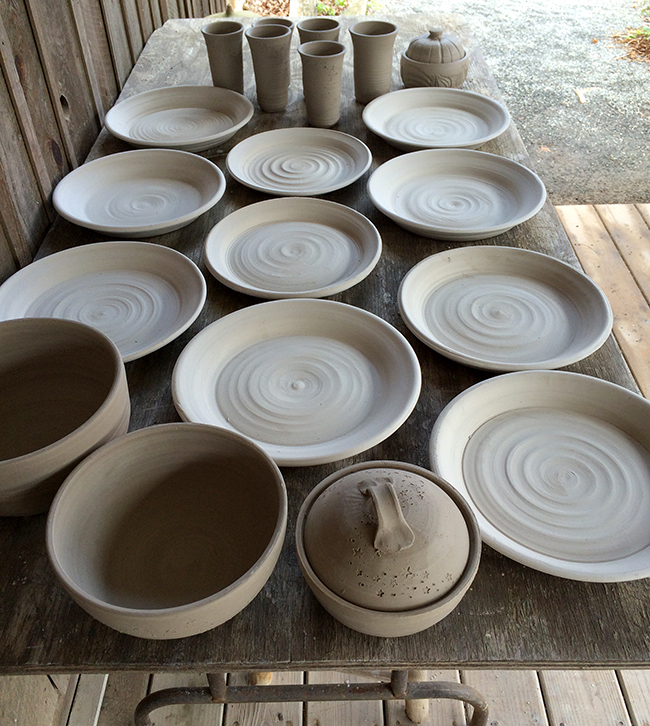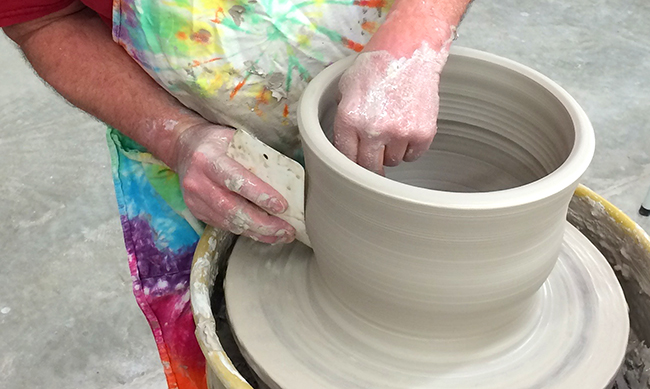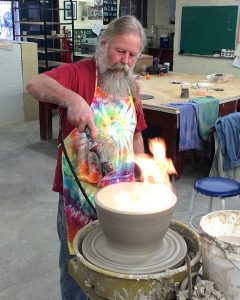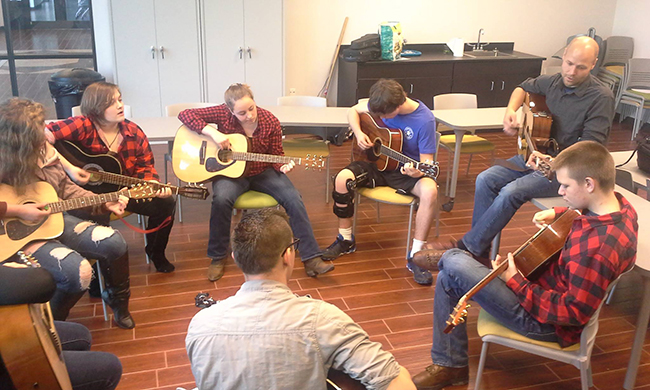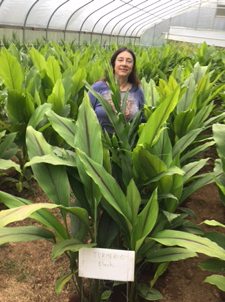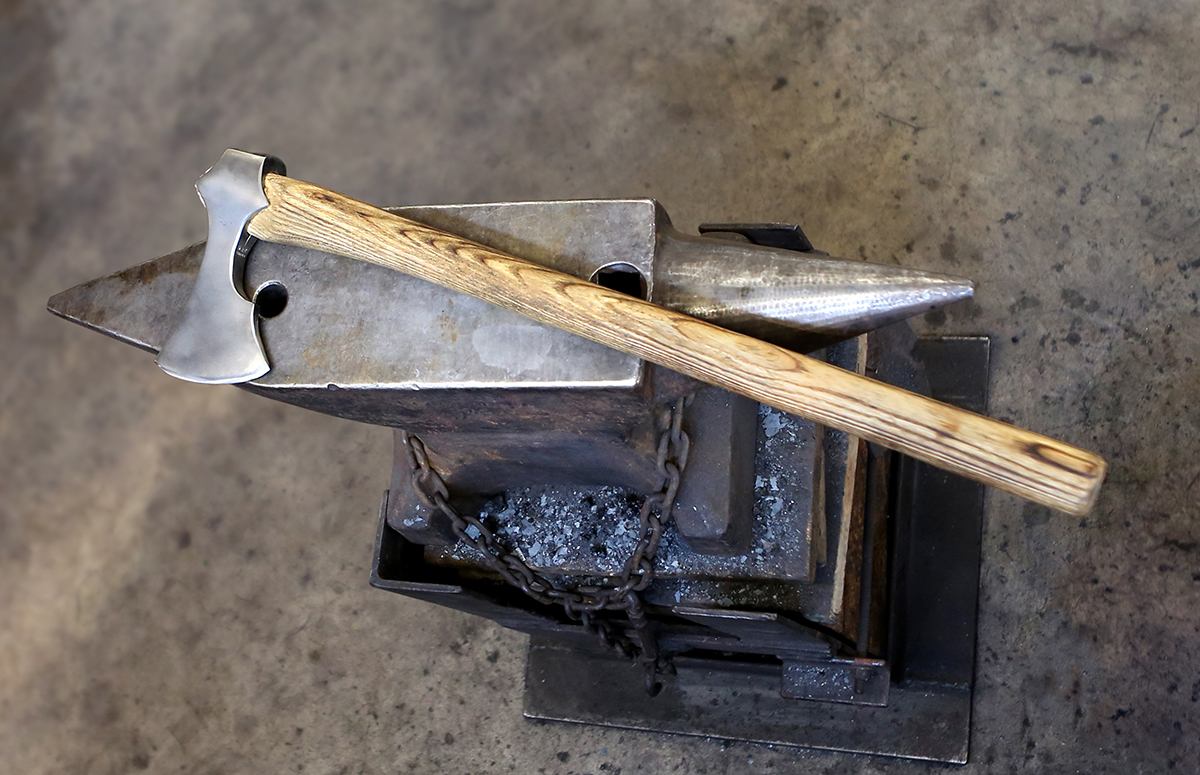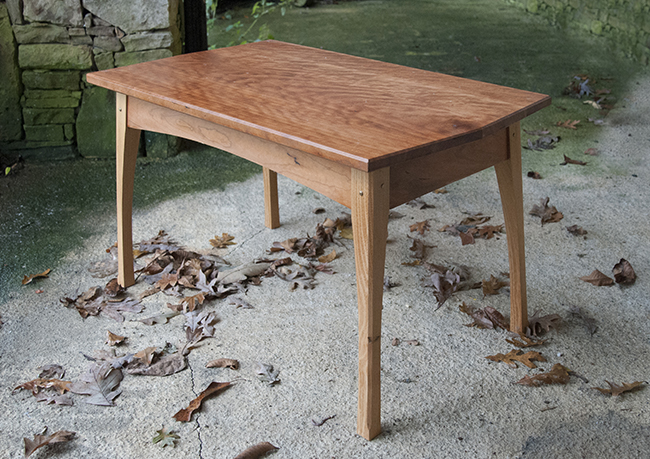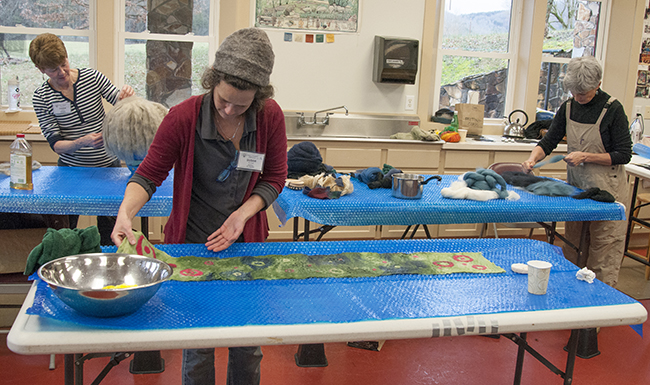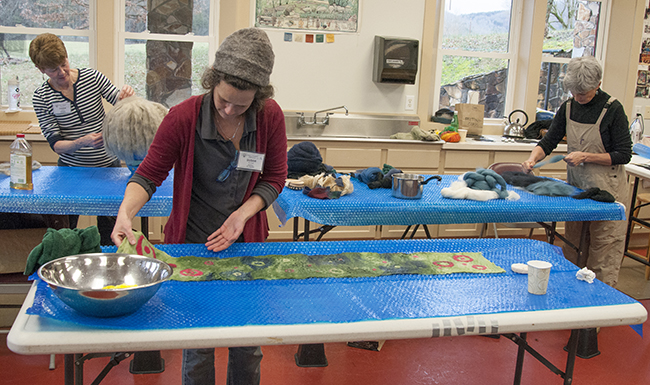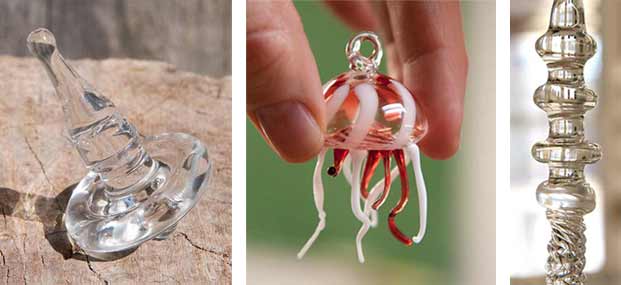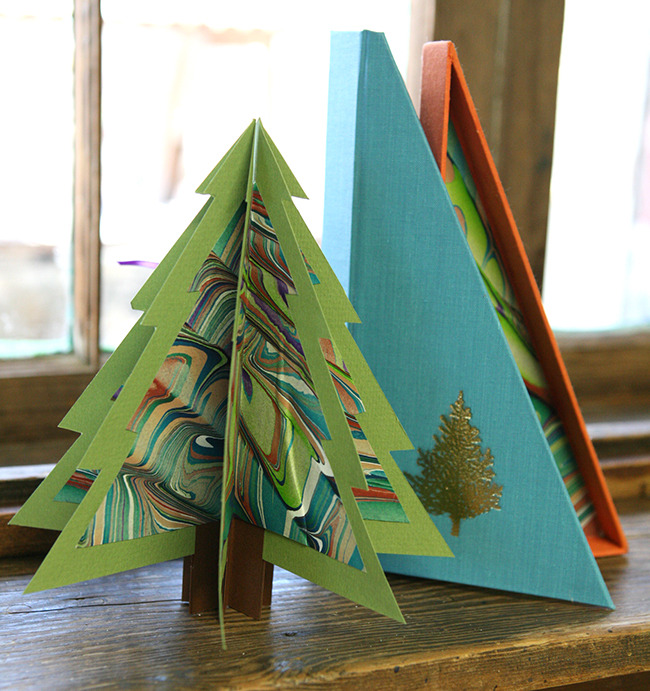Posted at 16:50h
in
Stories: Glass
[caption id="attachment_14405" align="aligncenter" width="634"]
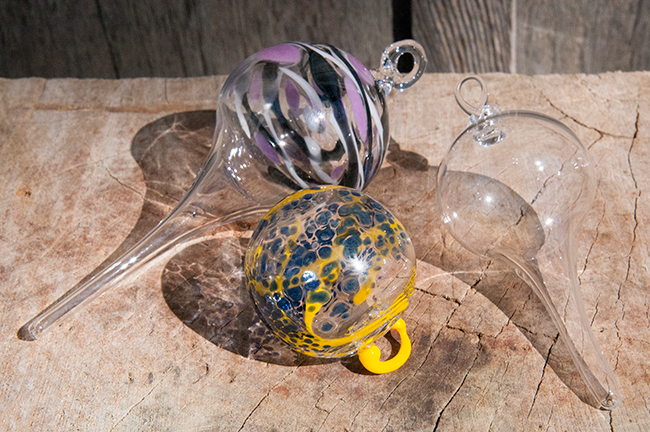
Blown glass ornaments by student Dylan Goodson[/caption]
[caption id="attachment_14403" align="alignright" width="328"]
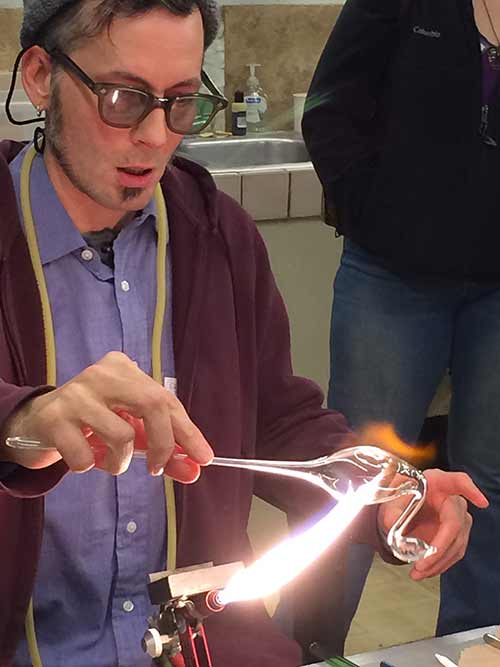
Tony Prince shapes a glass blown swan with the heat of the torch.[/caption]
What do swans, jellyfish, marbles, icicles, and ornaments have in common? These design shapes are just a few of the incredible student projects you could see this week in "Intro to Glass Blowing," co-taught by Alex Greenwood and Tony Prince. Using tabletop torches, students are learning the craft of manipulating tubes and rods of borosilicate glass into unique glassblown ornaments and small vessels.
Last night, I attended Tony's demonstration in the studio. Many Folk School folks packed the room, eager to see the torch in action and the experience the excitement of moving glass. Tony explained that glass material comes in many forms: a solid rod, a hollow tubing, and thinner colored rods and that there are many ways to use and connect the different types of glass.
Everyone looked on while Tony lit the torch and prepared the tube to make a hollow swan. When the glass tube was hot enough, Tony blew into the tube and the body of the swan rounded out like magic! He made it look so easy. Tony described it like blowing bubble gum or blowing up a balloon.
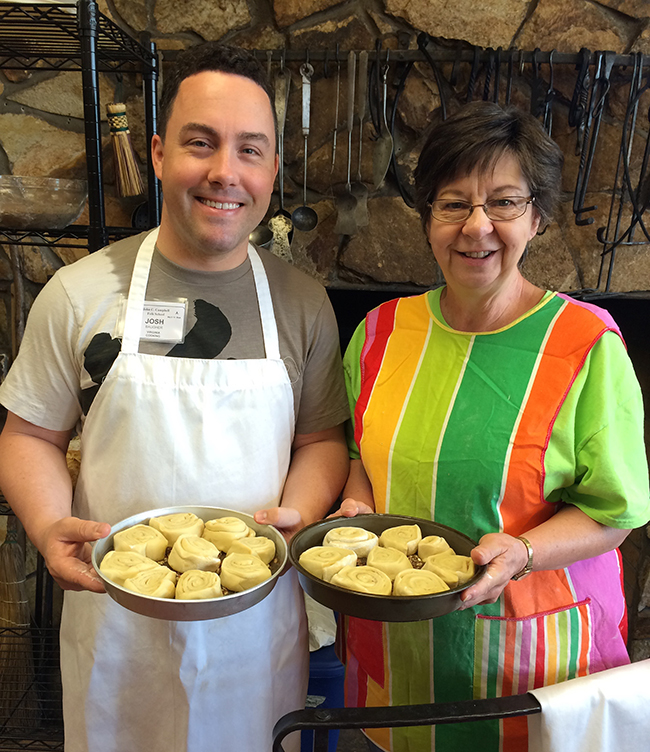 Every year, we have a sweet tooth soothing tradition in Emily Buehler's bread baking class. On Thursday, students team up to make a special recipe: Emily's Mom's Sticky Buns. The beginning of the week is spent learning the basics of breads like baguettes, sourdough loaves and whole wheat sandwich bread. By Thursday, students are happy to shift gears from savory to sweet for this divine gooey treat.
Every year, we have a sweet tooth soothing tradition in Emily Buehler's bread baking class. On Thursday, students team up to make a special recipe: Emily's Mom's Sticky Buns. The beginning of the week is spent learning the basics of breads like baguettes, sourdough loaves and whole wheat sandwich bread. By Thursday, students are happy to shift gears from savory to sweet for this divine gooey treat.




